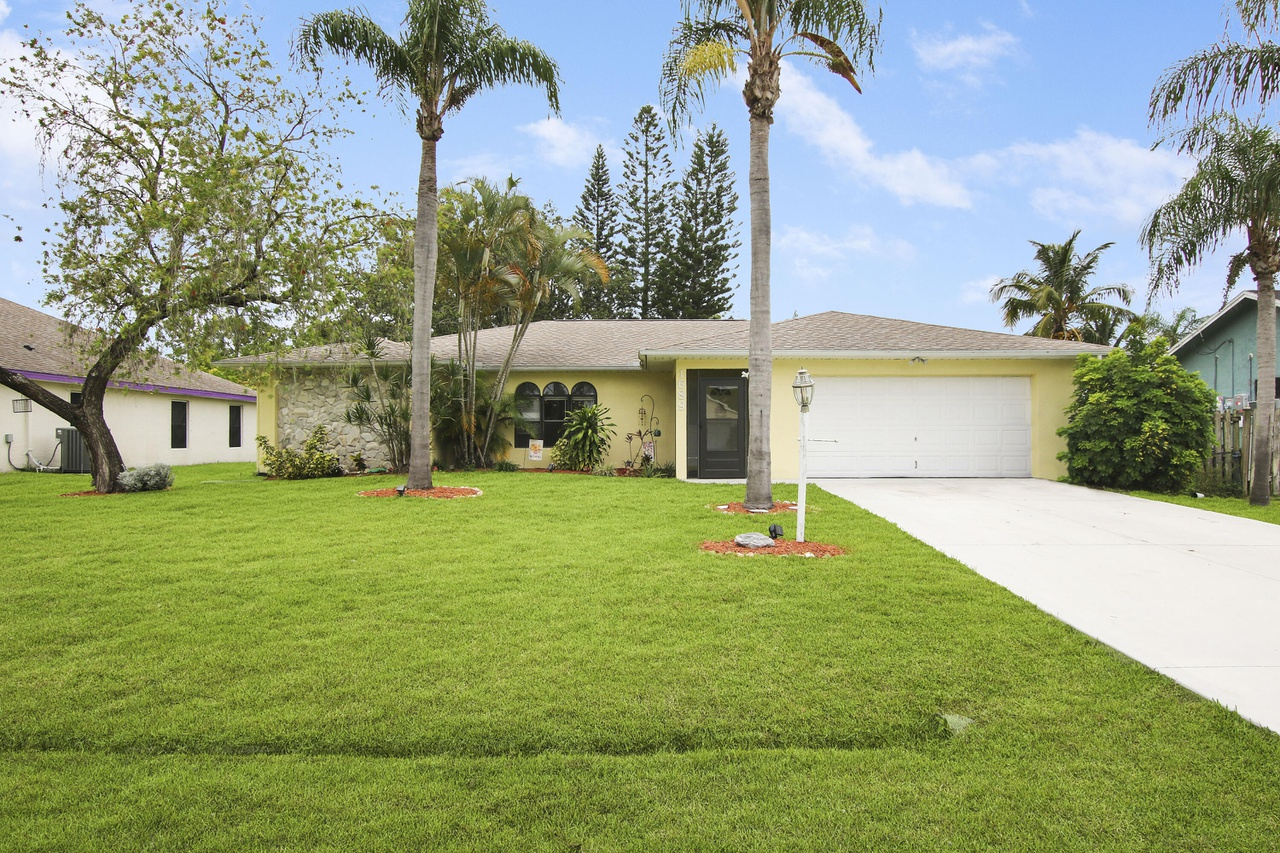Abstract
Purpose: This study aims to provide and illustrate the application of a framework for conducting techno-economic analyses (TEA) of early-stage designs for net-zero water and energy, single-family homes that meet affordable housing criteria in diverse locations.
Design/methodology/approach: The framework is developed and applied in a case example of a TEA of four designs for achieving net zero-water and energy in an affordable home in Saint Lucie County, Florida.
Findings: Homes built and sold at current market prices, using combinations of well versus rainwater harvesting (RWH) systems and grid-tied versus hybrid solar photovoltaic (PV) systems, can meet affordable housing criteria for moderate-income families, when 30-year fixed-rate mortgages are at 2%–3%. As rates rise to 6%, unless battery costs drop by 40% and 60%, respectively, homes using hybrid solar PV systems combined with well versus RWH systems cease to meet affordable housing criteria. For studied water and electricity usage and 6% interest rates, only well and grid-tied solar PV systems provide water and electricity at costs below current public supply prices.
Originality/value: This article provides a highly adaptable framework for conducting TEAs in diverse locations for designs of individual net-zero water and energy affordable homes and whole subdivisions of such homes. The framework includes a new technique for sizing storage tanks for residential RWH systems and provides a foundation for future research at the intersection of affordable housing development and residential net-zero water and energy systems design.
...
The total cost for a home with well and septic systems, when connected to the public electricity grid rather than having a solar PV system, is taken as $230,000. This cost was determined as the average sales price, per county property appraiser records, for newly constructed, model and spec homes of 1,100–1,400 ft2 in size (the size of the proposed affordable home ± 12%), that include onsite well and septic systems and the other passive design features identified in the present research, sold in 2020 and 2021 in Saint Lucie County, FL .
It is assumed that the only differences in costs using a well versus RWH system to achieve net-zero water are the differences in the costs associated with drilling and installing the casing for the well versus purchasing and installing the aboveground galvanized steel storage tank for the RWH system. It is assumed the costs for piping, filtering, disinfection and pumping in the two designs are the same.
Well drilling and casing costs in the state of Florida are estimated to be between $26 and $58 per foot (CVFPB, 2022). Using the highest figure and assuming a well depth of 200 feet provide an estimated cost for well drilling and casing of $11,600. A review of prices for water storage tanks offered by multiple manufacturers indicates that a reasonable cost for a 30,000-gallon (113.56 m³) aboveground galvanized steel water storage tank is $28,600 [5]. Thus, the total cost for a home with RWH and septic systems, when connected to the public electricity grid rather than having a solar PV system, is $230,000–$11,600 + $28,600 = $247,000.
It is assumed that differences in costs between hybrid versus grid-tied solar PV systems are because of hybrid systems, including batteries, battery-related balance of system (BOS) equipment and PV arrays of somewhat larger sizes. To be conservative, it is assumed the installed costs for PV arrays and array-related BOS components, for both grid-tied and hybrid systems, are $3 per Watt peak power, consistent with published mid to high ranges for such costs for residential rooftop systems (Fthenakis and Lynn, 2018; Feldman et al., 2021). Because the required peak power levels of the PV arrays for the grid-tied and hybrid systems are 5.28 and 6.16 kW, respectively, the installed costs of the arrays are $11,722 and $13,676, respectively [after applying the current Federal tax credit of 26% for residential solar systems (Glover and Allen, 2022)].
When the costs associated with including batteries in the hybrid system are added, the total system cost increases substantially. Estimates suggest installed costs of batteries and battery-related BOS equipment can be as high as $1,102/kWh (Feldman et al., 2021). Because the required capacity of the battery bank for the hybrid PV system is 78.25 kWh, the total after-tax cost of the battery storage system is $63,812 and the total after-tax cost for the overall hybrid system is $77,488.
The initial costs for the four design options for the net-zero water and energy affordable home, ordered from lowest to highest initial costs are as follows:
- Design WG, home using a well and septic system ($230,000) combined with a grid-tied solar PV system ($11,722), at an initial cost of $241,722;
- Design RG, home using a RWH and septic system ($247,000) combined with a grid-tied solar PV system ($11,722), at an initial cost of $258,722;
- Design WH, home using a well and septic system ($230,000) combined with a hybrid solar PV system ($77,488), at an initial cost of $307,488; and
- Design RH, home using a RWH and septic system ($247,000) combined with a hybrid solar PV system ($77,488), at an initial cost of $324,488.
The two designs that use grid-tied solar systems meet the criteria for being affordable homes for moderate-income eligible buyers having maximum monthly incomes of $8,000, with associated monthly expenses of $1,958 and $2,097 for designs WG and RG, respectively.
by Kurt Wurthmann
International Journal of Housing Markets and Analysis via Emerald Insight
Article publication date: 10 October 2022

No comments:
Post a Comment